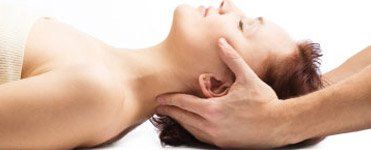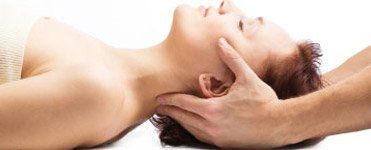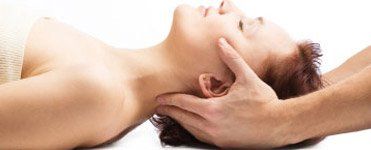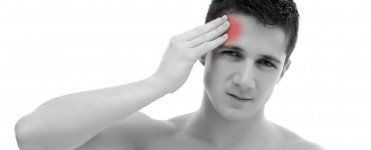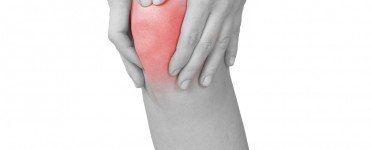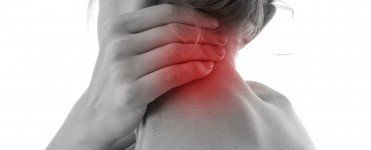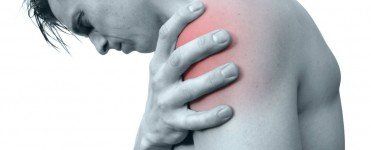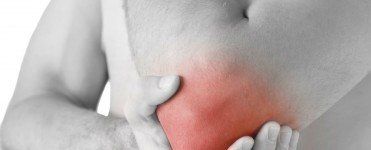Back pain is a very common problem, with reports suggesting as many as eight out of ten of us will suffer from it at some point during our lives (1). Around 5.6 million working days in the UK are lost each year due to back pain, second only to stress (2, 3).
Back pain can affect anyone at any age, and can often be the result of a sprain or a strain of the structures of the back such as the muscles, ligaments, joints or damage to the discs. Osteoarthritis or wear and tear in the back can also be a reason.
Most of us know that back pain can be painful and inconvenient, but it’s not usually serious and will often resolve on its own within a few weeks. However, many people seek osteopathic treatment to address it quickly (4) and at a time and place of their own choice; and osteopaths are skilled at helping prevent back pain from becoming a chronic, long-term condition.
Sources:
1.Palmer KT, Walsh K, et al. Back pain in Britain: comparison of two prevalence surveys at an interval of 10 years BMJ 2000;320:1577-1578
2.www.backcare.org.uk/factsandfigures
3.www.nhs.uk/Livewell/workplacehealth/Pages/backpainatwork.aspx
4.Gurry et al. (2004) looked at a multidisciplinary setting within Plymouth Primary Care Trust (PCT) 46. It found that the return to work time was quicker using this service which included osteopaths than GP and physiotherapy services alone.
Diagram of the anatomy of the back:
Back pain can be brought on by lifting, moving awkwardly or by an accident. Sometimes it can come on without any specific injury to your back. Stress, depression, posture, being overweight, sedentary living and poor lifestyle habits can all be significant factors.
People can feel a range of symptoms such as stiffness, tenderness and mild to very severe pain. The pain can come on quite suddenly or over time, and be located anywhere in the spine from the top of the neck to the pelvis. Sometimes pressure from the back on the nerves can cause pain or pins and needles and numbness in the legs and arms. X-rays, scans and other tests are sometimes required to make a diagnosis. If osteopathy treatment cannot completely heal or discover the cause of the back pain, your osteopath may refer to your GP or a specialist for any additional investigation.
How can an Osteopath help?
- Osteopaths are well known for treating back pain and patients report high satisfaction with treatment. There is good quality evidence supporting the beneficial effects of manipulation for back pain and the National Institutes for Clinical Excellence recommends osteopathy for sub-acute and chronic low back pain
- Osteopaths can use a wide range of gentle manual treatments depending on your age, fitness and diagnosis. We may gently massage the soft tissues of your back or rhythmically “rock” the joints to release tension and sometimes we may gently manipulate the back to loosen the joints and you may hear a “click”
- Treatment is different in every individual and sometimes it might involve treating other areas in the body such as the hips or neck
- We may offer advice on your lifestyle particularly if we feel something you are doing repetitively is part of the reason why you have back pain. We may offer advice on your posture and give advice on diet and exercise or give you specific exercises
.
Some of the back conditions patients visit osteopaths for:
- Acute back pain
- Chronic back pain
- Some Disc problems
- Mechanical back pain
- Sciatica
- Ankylosing spondylitis
- Osteoarthritis
Pain can occur in the foot and ankles for a number of reasons.
The foot and ankle is made up of a number of small bones interconnected by ligaments, muscles and fascia all working together to give the strength, stability and flexibility the foot and ankle needs to function properly.
Common conditions of the foot, ankle and areas which can give rise to pain include:
Acquired flat foot
– when the inner side of the foot or inner arch flattens. The foot may roll over to the inner side (known as over-pronation). It is often apparent if the heels of shoes wear out quickly and unevenly. Over-pronation can damage your ankle joint and achilles tendon (the tendon at the back of your ankle) and can also cause shin pain. Symptoms can include, pain, swelling, change in foot shape and knee pain or swelling.
Plantar fasciitis
–is pain and inflammation in the plantar fascia – the tough fibrous band of tissue that supports the arches of the foot and runs under the small bones from the underside of the heel and sole towards the
toes
, Often, people who have plantar fasciitis describe it as a sharp pain, most often under the heel or instep of the foot. It tends to be made worse by standing for long periods of time in poor footwear. Sufferers commonly mention that it is worse when standing after being off their feet for a long time, and it can hurt more putting the foot on the floor first thing in the morning. The sole of the foot can occasionally feel a little numb, tingly or swell slightly. In some cases of plantar fasciitis, a small spur of bone can grow where the plantar fascia attaches and pulls on the heel which can cause a sharp pain.
Achilles pain
–The Achilles tendon is formed by the tendon of the two calf muscles, the gastrocnemius and soleus coming together and attaching onto the bone at the back of the heel called the calcaneus) Pain, inflammation or tendonitis in the Achilles can cause pain and tightness in this area.
Sprained ankle.
Typically the result of a sudden twisting or “going over” on the ankle joint and more commonly it is the ligaments on the outside of the ankle that are strained. Typical symptoms are swelling, bruising, pain and instability of the ankle. Sometimes an x-ray is required to rule out any fracture. Rest, ice, elevation and compression are often advisable in the first 24 to 48 hours.
How can an osteopath help with foot and ankle pain?
- Depending on the diagnosis and your age and fitness we can use a variety of gentle massage and manipulative techniques to increase the mobility of the joints and the flexibility of the muscles in the foot.
- We will often look at muscles and joints in the lower limb, the knee, hip and lower back and may treat any joint restrictions and muscle tightness we find there. Often improving the movement in the joints of the lower will help the foot and ankle function better.
- We may offer specific balancing, strengthening or loosening exercises
- We may offer advice on strapping and brace supports, footwear and any lifestyle factors that might be hindering healing. We may refer you to a podiatrist for their opinion and specialist foot supports
- X-rays, scans or other tests may be required to make a diagnosis and we may refer you to your GP for any additional investigations and treatment such as advice on pain killers and anti-inflammatory medications
Pain occurring in the hand can sometimes be relieved by the gentle manual treatment of osteopaths depending on the cause.
Osteoarthritis or wear and tear in the joints of the hand and the elbow may be the cause of your symptoms and may benefit from treatment and advice from an osteopath.
X-rays, scans and other tests are sometimes required to make a diagnosis and your osteopath may refer to your GP or a specialist for any additional investigations or treatment.
There are several reasons for headaches. Most are not serious and once the cause is established headaches can often be helped by simple changes in lifestyle. One cause can be tension or strain in the muscles and joints of the neck and upper back.
Treatment from an osteopath may help. Gentle massage to the tight muscles and manipulation to loosen the joints of the neck, thorax and back can relieve the build-up of muscular tension that may lead to headaches. Osteopaths can also advise on exercise and lifestyle changes and offer guidance on simple changes to your posture when at work or driving which may help.
There are a number or reasons for hip pain some of which can be helped by visiting an osteopath.
Pain can come from a tight, strained or overused muscle in the hip or from the joint itself. Pain in the hip can sometimes be the result of an injury, it can be referred from the back or related to the way you move, stand and/or use your hip.
Pain from osteoarthritis or wear and tear in the hip joint is also common. Osteopaths can’t cure the arthritis and it depends on the severity of the wear and tear but treatment and advice from an osteopath can often help ease the symptoms. Osteopaths can look at the patient as a whole, assess the way the hip moves, strengthen and stretch the muscles, gently massage the hip muscles and stretch the hip joint to reduce tension and improve the mobility of the joint and work on the secondary problems like backache.
X-rays, scans and other tests are sometimes required to make a diagnosis and your osteopath may refer to your GP or a specialist for any additional investigations or treatment.
The knee is the largest joint in the body. It is a major weight-bearing joint and is one of the most frequently injured joints in the human body.
Knee pain can have a number of different causes and can be painful and debilitating and although some conditions may require surgery many can be helped with the right advice, exercise and treatment.
The knee joint lies between the femur and tibia and at the front is the patella or kneecap. It is made up of a number of structures including ligaments, muscles, capsule, synovial membrane and two ‘c’ shaped pieces of cartilage which sit between the femur and tibia known as the menisci.
Damage, strain or sprain to the structures of the knee can give rise to symptoms. It can be the result of a sudden injury as often seen in sports injuries or by repeatedly placing strain on an area of the knee. Poor alignment of the knee or kneecap and altered joint mechanics in relation to other joints such as the hips and knees are often significant. Osteoarthritis or wear and tear is a common condition that affects the knee.
Common symptoms in the knee include pain, stiffness, aching, pain, locking, swelling, limping and difficulty fully straightening or bending the knee.
X-rays, scans and other tests are sometimes required to make a diagnosis and your osteopath may refer to your GP or a specialist for any additional investigations or treatment.
Neck pain is common in people of all ages and is often caused by how we use our necks.
Working all day bent over a computer, driving long distances, poor posture while standing or sitting, stress and tiredness are all factors that can cause the muscles in the neck and upper back to become tight and the joints to become stiff which can contribute to ongoing neck pain.
Sometimes a nerve in your neck can become irritated or “trapped” and cause pain in the arm going down into your shoulder or the hand, and may be accompanied by pins and needles and numbness.
Some headaches can be the result of tension or stiffness in the neck and upper back.
Osteoarthritis or age-related wear and tear in the neck can also cause muscular pain from the neck into the shoulder as well as some stiffness in moving the neck.
How can an Osteopath help?
•Osteopaths can use a wide range of gentle manipulations depending on your age, fitness and diagnosis to reduce muscular tension in the neck and improve movement in the joints of the neck and upper back. We may gently massage the soft tissues or rhythmically “rock” the joints to release tension and sometimes we may gently manipulate the neck to move the joints and you may hear a “click”
•Treatment is different in every individual and sometimes it might involve treating other areas in the back and shoulders as well as the neck.
•We may offer advice on your posture at work or in the car and give advice on exercise and stretching to help keep your neck and upper back muscles and joints relaxed.
•X-rays, scans and other tests are sometimes required to make a diagnosis and your osteopath may refer to your GP or a specialist for any additional investigations or treatment
Shoulder Pain is common and can be caused by a number of conditions. These conditions include:
- Rotator cuff problem
- pain in the shoulder or upper arm, particularly when lifting the arm, lying on it or using the sore muscles. It is often the result of repetitive overuse of the arm and shoulder during a sport or activity or the result of a shoulder injury. Age can also play a part.
- Acromioclavicular joint pain
- painful joint on the tip of the shoulder where the collarbone and shoulder blade join
- Frozen shoulder or adhesive capsulitis
- is the painful and gradual stiffening of the shoulder capsule (the tissue that surrounds your shoulder joint) and the shoulder can often become so stiff and painful that it limits your ability to use your arm in everyday activities.
- Referred shoulder pain
- pain is experienced in an area away from the actual injury or problem e.g. pain in shoulder which is usually referred from the neck or upper back
- Osteoarthritis
– progressive wearing away of the cartilage of the joint leading to the two bones of the joint rubbing together causing pain. Patients who have had previous trauma or shoulder surgery are most likely to develop osteoarthritis in later life. Symptoms include swelling, stiffness, aching and sharp, stabbing pains.
- Shoulder instability
– dislocation or excessive movement of the shoulder joint
How can an Osteopath help with shoulder pain?
- Shoulder problems are often complex and can take a long time to resolve. An osteopath will work with you to try and understand the cause of your shoulder problem.
- Depending on your age, fitness and the diagnosis we may use a variety of massage, rhythmical articulation and stretching techniques to try and improve the movement in your shoulder and reduce tension in any tight muscles.
- Treatment is different in every individual and we may massage and loosen the joints of the neck and upper and mid back and shoulder blade area and sometimes the low back and hips if we feel they are contributing to your shoulder pain.
- We may offer specific strengthening or loosening exercises to the shoulder and offer advice on posture and look at how you use your shoulder and any lifestyle habits that may be contributing to your shoulder problem.
- X-rays, scans or other tests may be required to make a diagnosis and we may refer you to your GP for any further treatment.
Pain in the elbow is often due to two main conditions – tennis elbow and golfers elbow.
Tennis elbow causes pain and tenderness around the outside of the elbow joint, whereas golfer’s elbow causes pain around the inner side of the joint.
Tennis elbow is more common than golfers elbow and both are injuries from repetitive overuse or wear and tear from any hobby, sport or activity not just tennis or golf as the name implies. Sometimes a single injury such as a sudden unexpected tug on the forearm can cause the symptoms.
Once the pain starts, your normal activities and habits can maintain the problem.
Pre-existing problems with your neck, wrist or shoulder, that might not be painful in themselves, can make it more likely for you to suffer with tennis or golfers elbow. Most cases ease naturally eventually but many people seek treatment and advice from an osteopath.
How can an osteopath help with Tennis elbow and Golfers elbow?
How can an osteopath help with Tennis elbow and Golfers elbow?
- We can use a variety of different massage and manipulation techniques to try to ease your symptoms, get to the cause of the problem and get you back to your normal life style. We may gently manipulate the elbow, wrist, neck and upper back joints.
- We may offer you advice on which activities and movements to avoid, advice on specific exercise and advice an appropriate elbow brace support or sports strapping.
- We may suggest you see your GP for advice about pain medication or anti-inflammatories or refer you to them for further investigations.
All information taken from the Institute of Osteopathy
website
.

